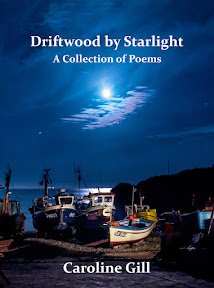





 Puffins
Puffins at
Bempton Cliffs(RSPB), Yorkshire, UK
Today is the big day! I have found it extremely hard to pick on one defining moment for the purposes of this post (see
Steven's blog). The traveller in me would pick the day I flew to Amsterdam and visited
Anne Frank's House. The poet in me would pick the day when I won poetry competition at the age of eleven for a poem entitled 'Koala Bear'. The animal lover in me would go for the afternoon when I came home with my first dog. The athlete in me (joke, joke) would select the occasion when I received a small green rosette for coming third in the flowerpot race. What about my many
Cornish moments which have shaped my thinking ever since? What about that expedition to
Corinth on a school trip, when I stood at the outdoor
bema (preaching desk), supposedly used by the Apostle Paul?
Those of you who have followed this blog, however, will not be surprised to find that I have chosen to recall the day when I saw my first puffins in the wild. This last statement is not strictly true, for we had been on the look-out a year earlier, and we think we saw one solitary puffin through a kind birder's highly magnified lens.
We returned to the spot the following year, and this time there was no Yorkshire
fret hugging the coast, so the visibility was much better. To our great delight, we saw puffins - through binoculars and with the naked eye. They were nesting. Some had stalks of grass in their beaks and others were finding a cliff ledge hole in which to rear a family. Others were looking quizzically at the
gannets. Others still were floating like little amber jewels in a necklace on the sea.
WHY am I so drawn to puffins, I wonder? Yes, they are definitely cute. Yes, they need all the 'friends' they can muster in these days when
numbers are declining in sites like the Farne Islands. Yes, they are photogenic and pose a challenge for the photographer. Yes to all these thoughts. However, it is something more that compels me to watch puffins. These small birds have taught me not only to spend time outdoors, enjoying the wonders of creation but they have made me want to understand something of what I see and sense around me. I find myself wondering where the puffins came from and where they will go (and I never was one for geography!).
Puffins have made me appreciate other birds, too. You cannot go to Bempton Cliffs in the spring without being blown away by the gannet colony, not to mention the
Razorbills and
Guillemots. However, it is not only the spectacular birds which catch my attention these days, although I admit to being a sucker for bright colours! I believe I saw my first
Corn Bunting last week in Wiltshire, and I definitely saw my first
Osprey in Scotland earlier in the summer.
My blogging activities have put me in touch with some wonderful birders. I am still very much a beginner when it comes to identifying the different species; but my knowledge and my appetite for bird knowledge have both increased enormously since that
'Eureka!' puffin moment. It is not only birds. When I am out with binoculars, I find myself on the look-out for butterflies, insects, caterpillars, lizards, newts, wild flowers, fungi, mice, deer, trees and so many interesting examples of flora and fauna.
The poet,
Edward Thomas, has long been a favourite of mine. He served in the Great War, and died when he was hit by a stray shell. Thomas was a keen observer of all that he saw. He wrote prose initially (who could resist his description of the watercress man?). Later he turned his hand to poetry and found new ways of using words. He was a great friend of the poet, Robert Frost - and as I close this post, I am reminded of Frost's immortal lines about the parting of the ways in the wood. I am so grateful to that first puffin for leading me down a new path of discovery, and to all the poets and bloggers who are helping me to learn more about the beautiful but fragile world around me.
Two favourite poems to sum up the essence of my thoughts:
My thanks to Steven of
The Golden Fish for hosting today's meme on the theme of a 'Transforming Moment'. My thanks also to all my fellow wildlife bloggers who have opened my eyes that bit wider to the wonders of our world. This is not a comprehensive list (I had to keep something for a future occasion!) - so thank you to everyone.
Here goes in alphabetical order... Enjoy!
- Christian Nature (reflections, photos, poetry...)
- Crafty Green Poet (Haiku, poetry, craft, green living)... and ReadWritePoem Nature Poetry Group
- East Anglian Skies (Wendy Webb and guests... don't miss the Sitooterie!)
- Ecobirder (wonderful photography)
- Faith, Fabric and Photos (I love the photos!)
- From the Field Book (avian poetry with Carol Thistlethwaite)
- GreenyGrey's Rambles (link to lovely swan on YouTube)
- Maureen Almond's Blog (this link is about trees)
- Nature Blog Network (join the gang!)
- Photo Hebrides (peace, beauty and photographs)
- Poefusion (poetry, wildlife and all sorts from Michelle)
- Polyolbion (birds and poetry with Matt Merritt)
- Professor David Morley (Cowper's hares and all sorts)
- Professor P. Brain's Blog (local to me)
- Raph's Ramblings (don't miss this one: 'wild life' with a difference!)
- Rock Paper Lizard (amazing moth eggs)
- Susan Richardson's Blog (poetry, the Arctic and other wild places)
- The Altered Page (new ways of seeing...)
- The Marvelous in Nature (Seabrooke's amazing wildlife blog: observations, phtography and art)
- The Weaver of Grass (threads of the countryside, literature, poetry, art and so much more)
- Vickie Henderson Art (truly amazing cranes!)
- Wildlife and Nature Photography (sheer beauty)
- Wildlife on Wheels ('wildlife stories and photos from a wheelchair' - wonderful)





































